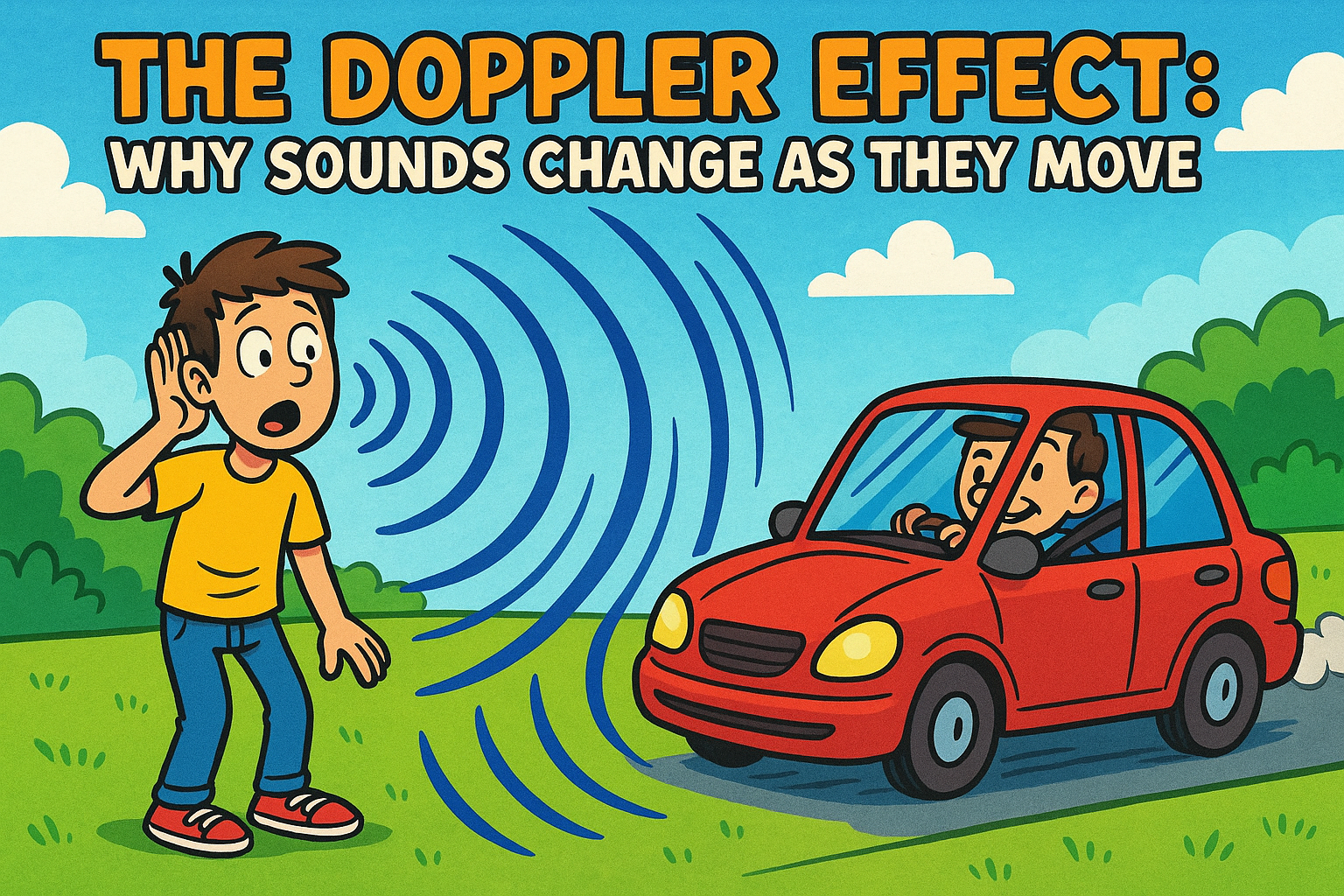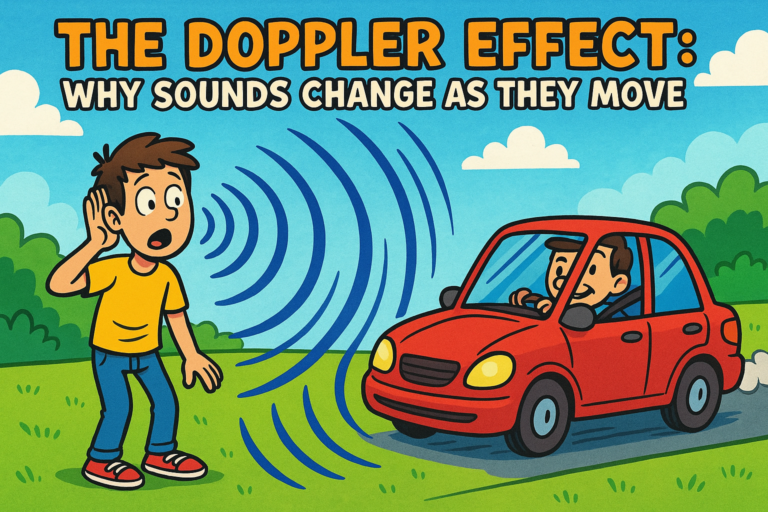The Doppler Effect: Why Sounds Change as They Move
The Doppler Effect: Why Sounds Change as They Move
Have you ever noticed how a siren seems to change pitch as it passes by? That strange shift in sound is caused by something called the Doppler effect, and it’s the focus of this Doppler effect lesson. This topic helps us understand how sound behaves when either the source or the listener is moving. It links directly to how we hear, how we measure speed, and even how astronomers study distant galaxies.
The Doppler effect isn’t just about sound. It shows up in all kinds of waves—from ambulance sirens to radar guns, and even in how we track the motion of stars and planets. By understanding this, learners can get a deeper insight into how waves work in real life. They’ll also learn how our ears and brain interpret those shifts in pitch and frequency.
This lesson covers the basics of sound waves, what changes when things move, and why our position matters. It uses everyday examples, scientific reasoning, and simple models to explore a topic that’s surprisingly deep. The aim is to give a clear understanding of how wave behaviour connects with speed, motion, and our perception of sound. By the end, your learner won’t just hear the difference—they’ll understand it.
This topic is part of our Info Zone collection. You can read the full topic, once logged in, here: The Doppler Effect: Why Sounds Change as They Move
You’ll also find a full Lesson Plan and a handy Parent Q & A sheet, for this topic, ready to use..
Members Only
You need to be registered and logged in to access this learning resource and other member only content. It only costs £1.99

